Project Notes
Camp DeSoto

Project Synopsis
Sarah Hurt reached out to us in during the summer. We discussed the project, defined the scope, and started work in the fall. DeSoto’s message needed review so we began with a Content Audit to provide the camp with an objective view of what they were saying online.
In December, I visited camp to get to know Sarah and her parents, Phil and Marsha Hurt. While at camp we reviewed their content together, discussed strategy, planned photography, and began thinking about the design.
The project continued through the spring and summer of the next year. An extended timeline isn’t uncommon for a larger project. During this time we finalized the photographer’s shot list, worked through our preliminary design process, and did some content coaching with Sarah.
We received photos at the end of the summer, just around the time we finished our internal development. Page crafting followed, then we trained Sarah to use Typewriter. After an hour or two on the phone, she took off running, making changes, swapping photos, finalizing the site so we could go live.
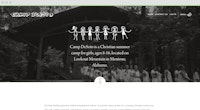
We got this note from Sarah shortly after the new site rolled out.
We set you up for success
From our perspective, a job well done ends when you take charge of your website. It feels like a big step, but you can do it when you have a trusted partner backing you up.
Design Process
Our process begins with conversation and exploration. It’s fun to look and learn, talk and deconstruct — then we take these loose ideas & present them visually to make sure we’re on the same page. We explore together, make decisions together, and move forward, together.
Everyone was leaning towards a spare use of color on DeSoto’s new site. Sarah wanted her photographer’s warm, rich photography to pop off a lot of white. The colors we used would be minimal, but they had to feel bright to match the camp’s upbeat atmosphere.
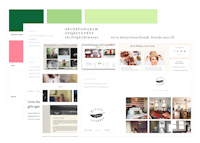
“Sarah brought design experience to the project along with strong opinions regarding type, which we welcomed. Selecting typography is one of our favorite parts of the process. It is not often noticed in its own right, but carefully crafted type can do more to inject a camp’s personality into a website than almost any other element of the design.” — Chuck Fultz
Collaboration
After the design direction was established, two collaborators joined us. Carlyle Wolfe, a former camper whose artwork adorns many camp banners and walls, contributed some very special illustrations for the site. DeSoto signed A Bryan Photo on to shoot photos.
Hi-fi home page for different screen sizes
The home page sets the tone for the rest of the site so we start there. Responsive design requires us to think about your content as something that is flexible, adapting to the screen size where it is viewed. Below you can see the home page as originally conceived for phones (left), tablets (middle), and larger screens (right).

Thinking inside the blocks
Once the home page is approved we address the other layout blocks that will make up the rest of the website. Variety is important to us, so we make sure we have ample options for crafting pages.
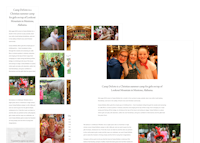
Almost half-way there
The design phase seems like the biggest part of a website redesign, but there’s still a lot of work to be done. Onward ho!
Development
Now that we know what the new website should look like, it’s time to start writing code! Transforming a static mockup into a working website is no small feat. There are browser bugs to work around, operating system issues to consider, fonts may or may not render as hoped — one variable after another. Getting everything to work responsively on different screens is an art form.
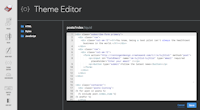
All of that hard work ends up as HTML, CSS, & Javascript files in Typewriter. That means that in the future, if you need to make a change to the code, you have access.
Crafting Pages
Design happens at the start and end of a project. Compelling pages require time and craftsmanship. Each photo, line of text, heading, and call to action deserves thoughtful consideration.
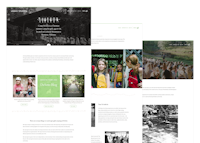
Crafting pages for DeSoto’s site took about two weeks for us to complete, and it isn’t a very large site. This process is a labor of love for us and cutting corners isn’t our style!
We teach you
At the end of a project we do something that’s really exciting. We show you the finished site, and you click through to look for typos, photos you don’t love, and anything else you want to tweak.
Then we teach you how to make changes. We do this so you get comfortable using your new website. This is on-the-job training! We go through this process before your site goes live so you don’t have to worry about making mistakes later on.
Sarah caught on quickly. So did Jimboy at Greystone, Jeff at Romaca, the team at Colvig, Robert at Mondamin…
